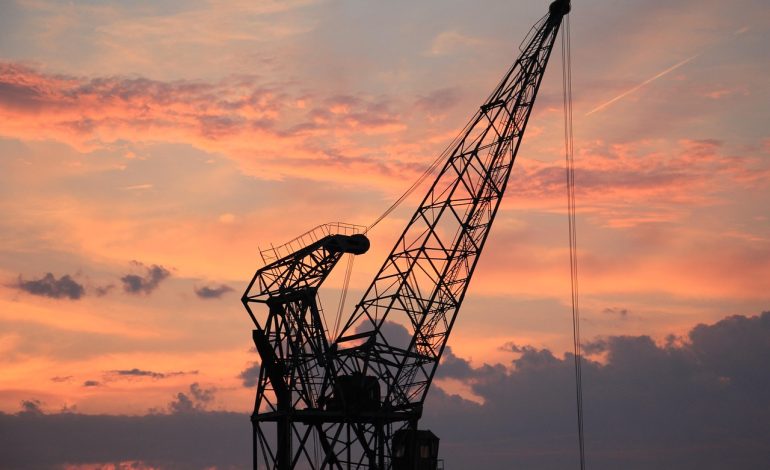
Establishing appropriate inspection intervals requires balancing regulatory requirements, operational demands, and safety considerations. Unlike simple maintenance schedules, crane inspection frequency depends on multiple variables that affect equipment reliability and worker safety.
Industry experience shows that rigid inspection schedules often miss critical issues while adaptive approaches provide better protection. Smart facility managers consider usage patterns, environmental conditions, and equipment age when developing inspection programs.
The 2016 crane incident at a Texas refinery highlighted inadequate inspection frequency consequences. Despite meeting minimum regulatory requirements, the crane failed due to accelerated wear from harsh operating conditions that standard schedules didn’t account for.
Regulatory Baseline Requirements
OSHA Standards Federal regulations establish minimum inspection frequencies as baseline requirements. However, these standards represent floors, not ceilings for inspection programs.
Daily Pre-Use Inspections Equipment operators must perform basic safety checks before each shift. These quick evaluations identify obvious defects or damage requiring immediate attention.
Monthly Inspections More comprehensive evaluations occur monthly for frequently used equipment. These inspections examine structural components, safety devices, and operational systems.
Annual Inspections Detailed yearly assessments involve certified inspectors performing comprehensive evaluations of all crane systems and components.
Usage-Based Frequency Adjustments
High-utilization cranes require more frequent professional inspection than occasionally used equipment. A crane operating multiple shifts daily accumulates wear faster than weekend-only equipment.
Construction cranes working in demanding environments need accelerated inspection schedules. Demolition work, heavy lifting, and extreme weather exposure increase component stress significantly.
Environmental Impact Factors
Coastal Operations Salt air accelerates corrosion, requiring more frequent structural inspections. A shipyard in Charleston discovered critical deterioration between scheduled inspections due to aggressive marine environment.
Industrial Environments Chemical plants, refineries, and manufacturing facilities expose cranes to corrosive substances requiring specialized inspection protocols.
Extreme Weather Exposure Equipment operating in harsh climates needs adapted inspection schedules. Desert heat affects hydraulics while freezing temperatures impact electrical systems.
Equipment Age and Condition
Older cranes require more frequent inspection as components approach design life limits. Wear patterns accelerate, requiring closer monitoring to maintain safe operation.
Well-maintained newer equipment might safely extend certain inspection intervals while aging equipment needs accelerated schedules for critical components.
Understanding annual crane inspection checklist requirements helps establish comprehensive evaluation programs. These detailed assessments form inspection program foundations.
Professional crane safety inspection procedures ensure consistent quality regardless of inspection frequency. Standardized approaches prevent oversight and ensure regulatory compliance.
Real-World Frequency Examples
A major construction company operating in multiple states developed risk-based inspection schedules. High-usage cranes receive monthly professional inspections while occasional-use equipment follows quarterly schedules.
Manufacturing facilities often implement condition-based inspection programs. Advanced monitoring systems track operating parameters, triggering inspections when predetermined thresholds are exceeded.
Rental companies typically maintain aggressive inspection schedules due to varied usage patterns and regulatory requirements. Equipment might receive professional evaluation after each major project.
Geographic Considerations
Regional regulations sometimes exceed federal minimums. California’s stringent requirements mandate more frequent inspections than neighboring states.
Local crane inspection services in Denver understand altitude effects on hydraulic systems and electrical components requiring specialized attention.
Similarly, crane inspection services in Miami account for hurricane exposure and salt air corrosion affecting inspection frequency recommendations.
Technology-Enhanced Scheduling
Modern fleet management systems track usage hours, load cycles, and environmental exposure to optimize inspection timing. These systems generate alerts when predetermined intervals or conditions are met.
Predictive maintenance technologies identify component degradation trends, allowing proactive inspection scheduling before failures occur.
Cost-Benefit Analysis
More frequent inspections increase upfront costs but prevent expensive failures and downtime. Emergency repairs typically cost significantly more than preventive maintenance.
Insurance carriers often provide premium reductions for facilities maintaining aggressive inspection schedules. These savings can offset increased inspection costs while improving safety.
Understanding what crane inspection involves helps justify appropriate inspection frequencies to management and insurance providers.
Professional inspection services like Certified Crane Inspectors provide flexible scheduling accommodating operational requirements while maintaining safety standards.
Optimal crane inspection frequency balances regulatory compliance, operational demands, and safety requirements. Smart scheduling considers multiple factors beyond minimum requirements to ensure reliable, safe equipment operation throughout service life.
Leave A Reply